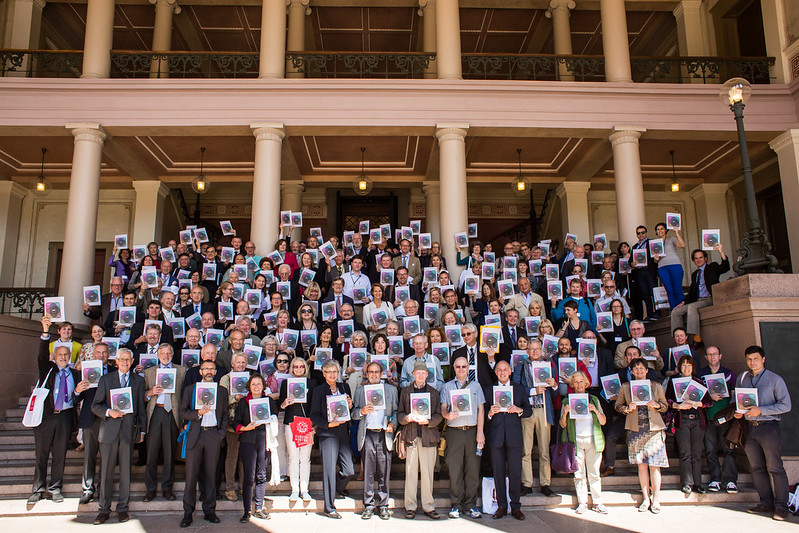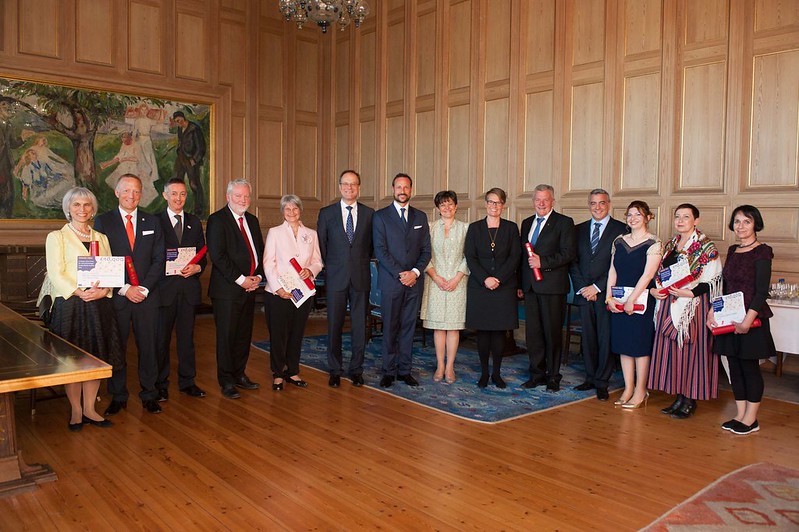Commissioner Navracsics: “Culture is the hidden gem of our foreign policy”
Tibor Navracsics
European Commissioner for Education, Youth, Sport and Culture
Tibor Navracsics is a strong advocate for putting culture and cultural heritage in the heart of European policies. He believes Europe’s culture can be a catalyst for innovation, economic growth and new jobs. He wants to empower young people of all social and cultural backgrounds to participate fully in civic and democratic life. Not a trivial mission for his relatively small team of dedicated staff. Time to catch up with the Commissioner and to ask him about his plans and strategies. And what about the European Year of Cultural Heritage in 2018?
Commissioner Navracsics, you have been responsible for Culture and Cultural Heritage in the European Commission for close to two years. In your opinion, what are Europe’s biggest challenges in this field? What are the EU’s achievements of which you are most proud?
Cultural heritage is inherently linked to some of the most pressing challenges that humanity faces as a whole. Global warming and climate change, conflicts and urbanisation, or the trafficking of cultural artifacts – issues like these can put cultural heritage at risk. At the same time, digitisation and the online accessibility of cultural content are shaking up traditional models, transforming value chains and calling for new approaches to our cultural and artistic heritage.
It is now clear that we need to move beyond the simple physical preservation of sites. Their meaning may be still be lost forever if the knowledge embodied in them is not preserved and transmitted from generation to generation. The survival of our heritage sites depends on their becoming accessible to all. They need to become centres of knowledge, focal points for creativity and culture, and places of community interaction and social integration.
Preservation, conservation and contemporary creativity are all interlinked. I am very pleased that we now have a policy strategy linking the cultural and creative sectors with the overarching goal of economic growth and job creation in the EU. This approach is a balanced mix of support for the intrinsic value of culture and art with targeted emphasis on the economic value of these sectors, since the two can – and must – coexist.
As a European Commissioner you have visited many heritage sites around Europe: which one has made a particular, very personal impact on you?
It is very hard to choose, given the many fascinating sites across Europe, each with their own unique character and history. I was very impressed by Wroclaw University when I saw it during a visit to the city in January for the official opening of the European Capital of Culture activities. This university is such an emblem of our shared European story, with the mix of German, Polish and other cultures that have made a lasting impact and the way it has overcome destruction and hardship.
You have taken a keen interest in Europa Nostra’s 7 Most Endangered Programme and especially the endangered synagogue in Subotica (Serbia). Could you tell us about your hopes for this exceptional heritage site? And what are your thoughts on the Venice Lagoon, which has recently been nominated as the most endangered site in Europe? Can we all join forces to help the Italian authorities to adopt and implement a long-term vision and strategy to ensure a future for Venice and its Lagoon?
The Synagogue in Subotica is one of the finest surviving examples of Art Nouveau religious architecture in the world and the only surviving Hungarian Art Nouveau Jewish place of worship. Designated a Monument of Culture of Exceptional Importance by the Republic of Serbia, over the last decade it has benefited from restoration work and is now included in cross-border tourism itineraries along with the Hungarian city of Szeged. The site nevertheless remains at serious risk, and I hope that its designation in 2015 as one of the seven most endangered monuments in Europe by Europa Nostra and the European Investment Bank Institute will pave the way for a more strategic and holistic approach to its restoration.
Venice, with its lagoon, is a living example of how people can interact with their natural environment over a very long period of time. It is also a unique cultural heritage site, with extraordinary architecture and one of the highest concentrations of masterpieces in the world. Yet, Venice faces great dangers like the rise in sea level due to climate change, the increasing traffic flow of large-scale container and cruise ships, and the dredging of deeper channels, to name but a few. So far there has been no agreed Management Plan for Venice. It would indeed be needed to help the Italian authorities adopt and implement a long-term plan to safeguard the future for Venice and its lagoon.
Europa Nostra enjoys a fruitful partnership with the EC through the European Union Prize for Cultural Heritage / Europa Nostra Awards. The EU organises also other prestigious award schemes to stimulate the best practices in the field of architecture, literature, and pop music. We understand you would like to give to all those European Awards an even higher importance and visibility within the EU Agenda for Culture?
The EU Prize for Cultural Heritage/Europa Nostra awards are the most important recognition in the European heritage sector. Safeguarding cultural heritage demands good cooperation at all levels. We are proud of our cooperation with Europa Nostra on this prize. Europa Nostra is an important partner and I am glad we will continue working together in the coming years,
We believe that the top quality work of the winners ought to be widely known and recognised, for their benefit but also because their work is a source of inspiration on how to tackle the challenges faced today by the heritage sector.
In addition to the prize for cultural heritage, we organise and financially support other award schemes – in architecture, literature and rock and pop music. Through our Creative Europe programme, we co-finance hundreds of cooperation projects and platforms. The focus nowadays is also on capacity-building, helping artists develop international careers and find new audiences for European cultural works.

As you know, last year in Oslo, together with 5 European partners, we have presented the results of a 2 year project, funded by the EC, called ‘Cultural Heritage Counts for Europe’. What can be done at the EU level to recognise more strongly the importance of cultural heritage – both tangible and intangible – for the future of Europe? Our shared heritage is a “cement” that holds the entire European “edifice” together. Europa Nostra therefore believe that heritage can help Europe to respond – in a positive way – to the current multiple and very serious crisis. For example, by giving incentives to large-scale investments in heritage-led regeneration and reconciliation throughout Europe, benefiting different communities and neighbourhoods. What is your opinion on these proposals?
The “Cultural Heritage Counts for Europe” project showed the wide range of cultural, environmental, social and economic benefits of cultural heritage for Europe. It revealed that heritage attracts talented people and innovators, contributing to the prosperity of our cities and the quality of our lives.
Member States and stakeholders are using the resources offered by Creative Europe. A substantial part of the funding is dedicated to heritage projects, and the other opportunities available at EU level, such as COSME and Erasmus+. Heritage-related issues are also frequently addressed by projects under Horizon 2020, while under the Structural Funds we are seeing an increase in investment in heritage preservation and valorisation, which for 2014-2020 will be in the range of EUR 6 billion.
Finally, following the political agreement reached between the European Parliament, Member States and the Commission, the scope of the European Fund for Strategic Investments has been extended to projects in the area of culture, including heritage.
With great interest we have been following the joint initiative taken by Vice-President Mogherini and yourself to give much bigger importance to cultural diplomacy as a key soft power tool for EU’s external relations. Can you tell us more about these plans?
Developing a strategic approach to culture in EU external relations is one of my political priorities. Culture is the hidden gem of our foreign policy. There is strong interest in the world in engaging culturally with Europe. To meet it, we need to exploit the combined potential of our policies and programmes for direct contacts between people as well as for the cultural and creative sectors, so that new and powerful partnerships can be created alongside political and economic relations. This will help make Europe a stronger global actor.
There is also an aspect that directly affects cultural heritage. Like all of us, I am horrified by the terrible loss of life and destruction of historical and cultural sites in Syria and Iraq, perpetrated for ideological reasons. This is an unacceptable attack not only on the culture of these countries but also on our common values as human beings. The EU has repeatedly condemned these crimes, and is taking action to protect heritage in war zones. Since 2014, we have been supporting cultural heritage protection in Syria. We have banned imports of cultural goods from Syria and Iraq. We work with international partners, especially UNESCO, whose expertise in this field is very valuable.
Our strategy for cultural diplomacy also includes the protection of the world’s culture when it is in danger. I take this opportunity to pay particular thanks to Irina Bokova, UNESCO Director-General, and to express our full support to UNESCO’s #Unite4Heritage campaign.
In closing, can you tell us your views and hopes with regard to the proposed European Year of Cultural Heritage? Would it not be the right investment in reviving a positive attitude towards European values and ideals, which are at the basis of the entire European project?
I am pleased that the European Commission will present a proposal to make 2018 the European Year of Cultural Heritage. I am convinced that it would be a good opportunity to boost awareness for and promote education about our cultural heritage. I will be happy to start the legislative procedure and to work with Member States, the European Parliament and our stakeholders in this field to make this happen.
A European Year can reach out to society, engaging all citizens in a deeper reflection on the roots and meaning of our shared values. It should be as inclusive as possible to encourage better ownership of cultural heritage by European citizens. In particular, we should reach out to young people and encourage them to become involved in running and preserving heritage sites.
Finally, a European Year can be a stimulus to continue encouraging innovative governance models, where public and private actors, local communities and stakeholders participate in the maintenance and management of cultural heritage. We see this as a condition for making heritage part of broad-based long-term development plans in Europe.








